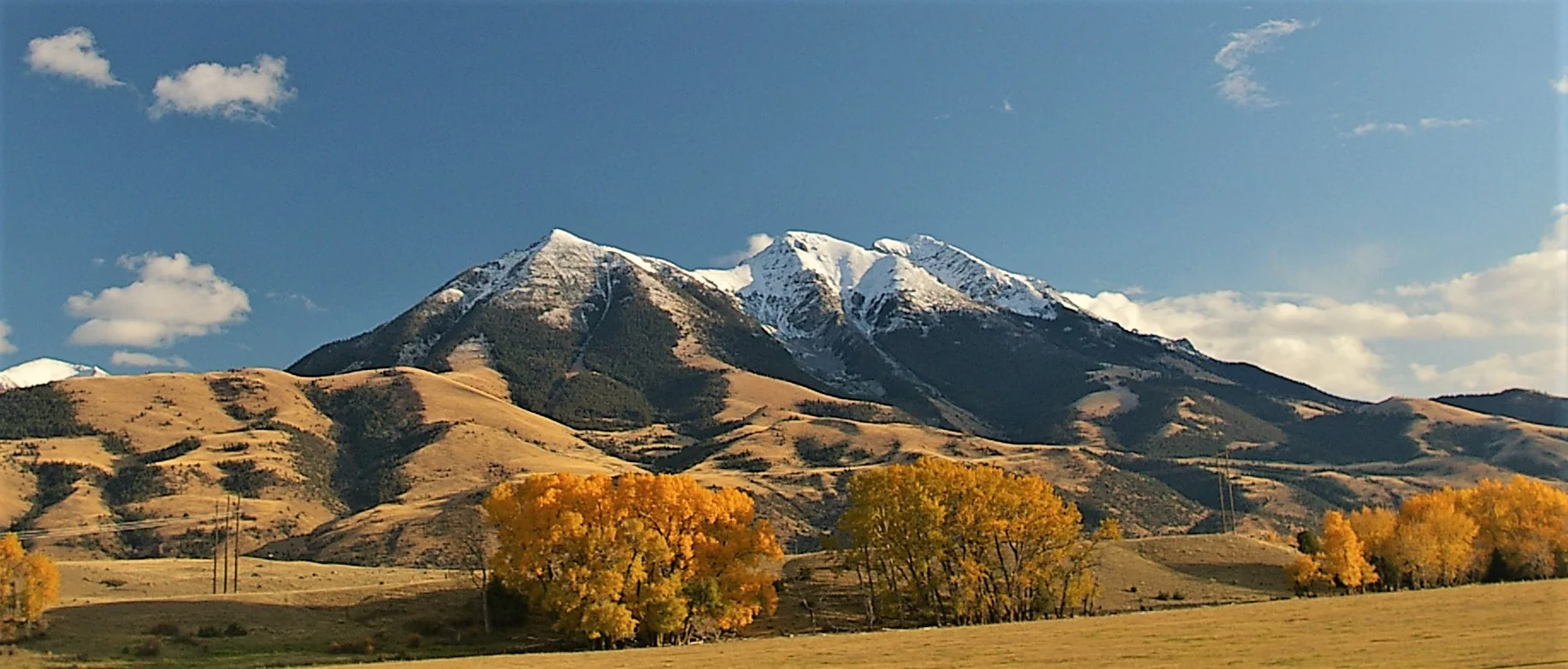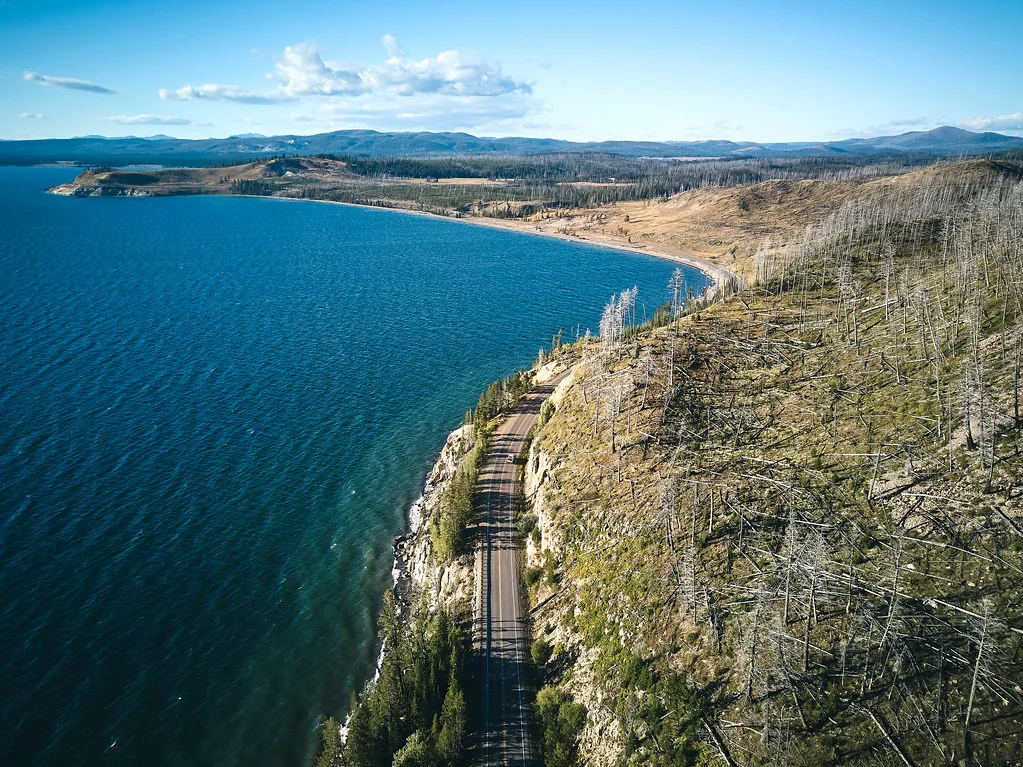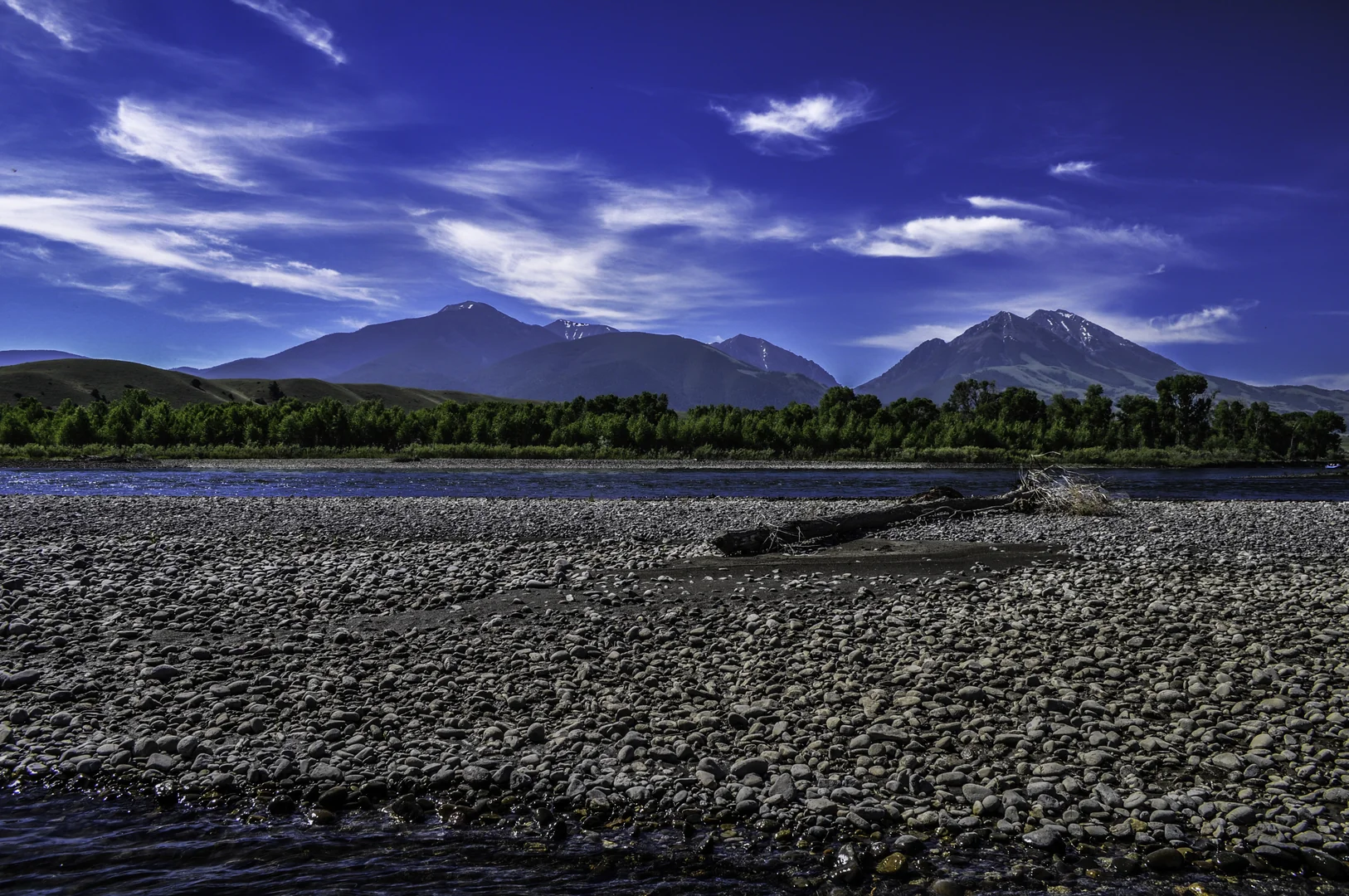The Yellowstone Tax: How Montana's Gateway Towns Extract Premium Prices from America's Most Famous Park
Complete guide to the yellowstone tax: how montana's gateway towns extract premium prices from america's most famous park. Detailed information, recommendations

Every summer, over four million visitors funnel through Montana's gateway towns on their pilgrimage to Yellowstone National Park. What they encounter isn't just America's first national park—it's one of the most sophisticated tourism extraction economies in the country. A simple motel room that costs $65 in Billings suddenly commands $300 in West Yellowstone. That gas station hot dog jumps from $2 to $8. Even parking spaces become premium real estate.
This isn't accidental price gouging—it's the deliberate architecture of Montana's tourism economy, built around geographic monopolies that would make railroad barons blush. The gateway towns of West Yellowstone, Gardiner, and Cooke City have perfected the art of capturing tourist dollars through what locals quietly call "the Yellowstone tax." Understanding how this system works reveals not just why your vacation costs so much, but how proximity to public lands has created private fortunes while leaving many Montana residents priced out of their own backyard.
The Geography Premium
West Yellowstone sits like a tollbooth at the park's most popular entrance, transforming geographic luck into economic gold. This small town of 1,200 permanent residents swells to over 10,000 during peak season, creating a captive market that business owners have learned to exploit with surgical precision.
The numbers tell the story starkly. During Yellowstone's shoulder season in May, a standard motel room averages $120 per night. By July, that same room costs $280-$350, with premium properties pushing $500. The stunning vista that draws millions becomes the justification for prices that rival Manhattan hotels. But unlike Manhattan, West Yellowstone offers no alternatives—you pay the premium or drive hours to find cheaper lodging.
This geographic monopoly extends beyond hotels. Restaurants capitalize on exhausted families who've driven hundreds of miles and won't turn back over a $45 burger platter. Gas stations know you need fuel for the park loop roads, charging 50-80 cents more per gallon than Bozeman, just 90 minutes away. Grocery stores stock basic supplies at resort prices because they can—where else will you buy that forgotten sunscreen or camp stove fuel?
The remarkable landscape becomes both attraction and economic weapon. Park entrance quotas mean visitors can't easily shift their timing, and camping reservations book months ahead, funneling overflow into commercial lodging. Business owners have learned to maximize revenue during the narrow window when geography grants them true pricing power.
Property owners compound the premium through strategic scarcity. Many successful lodging properties remain family-owned for decades, passed down through generations rather than sold. This limits supply artificially, keeping occupancy rates high and prices higher. The town's zoning restrictions and limited developable land create additional barriers to new competition, protecting existing operators' market position.
The Land Grab
The current tourism oligarchy in Montana's gateway towns didn't emerge overnight—it's the product of a calculated land grab that began in the 1970s and accelerated through the 1990s. As Yellowstone's popularity exploded, a small group of investors and established local families systematically acquired prime real estate near park entrances, creating vertically integrated tourism empires that control everything from where visitors sleep to what they eat.
In West Yellowstone, three family groups now control roughly 60% of the commercial lodging capacity. These aren't small mom-and-pop operations—they're sophisticated businesses that own multiple properties, restaurants, and retail operations. The consolidation allows coordinated pricing that maximizes revenue extraction during peak season while maintaining artificially high rates during shoulder periods.
Gardiner's story follows a similar pattern, though on a smaller scale. The town's proximity to Yellowstone's north entrance made it attractive to investors who understood that controlling accommodation near the only year-round park entrance meant capturing visitors regardless of season. A handful of operators now dominate lodging options, creating an informal cartel that keeps prices elevated even when occupancy drops.
The consolidation extends beyond lodging into retail and dining. In many cases, the same families who own the hotels also operate the restaurants, gift shops, and activity booking services. This vertical integration ensures tourism dollars cycle through their businesses multiple times before leaving town. A visitor might unknowingly patronize the same ownership group for lodging, meals, and souvenir purchases.
Local governments have become complicit partners in this arrangement. Zoning regulations favor existing operators by limiting new development, while business licensing creates barriers to entry for potential competitors. Tax incentives often benefit established businesses more than startups. The result is an economic ecosystem designed to protect incumbent operators' market power rather than fostering genuine competition that might benefit consumers.
The Seasonal Cash Extraction Machine
Gateway towns operate on a brutal economic calendar that concentrates twelve months of revenue into roughly fourteen weeks. This compressed earning season has created a cash extraction machine calibrated to squeeze maximum value from every tourist interaction. Business owners know they have limited time to generate annual profits, creating pricing strategies that would seem aggressive in normal markets but become essential for survival in Montana's seasonal economy.
The machine operates on several synchronized levels. Hotels implement dynamic pricing that adjusts rates daily based on park visitation forecasts, weather patterns, and regional events. A sudden thunderstorm forecast for the park can trigger 20% rate increases as visitors seek indoor activities in town. Rangers reporting wildlife sightings near popular trails cause immediate spikes in accommodation demand, which operators monetize within hours.
Restaurants coordinate their seasonal pricing to capture different spending patterns throughout visitors' stays. Breakfast prices peak on departure days when families want quick meals before hitting the road. Dinner rates climb during mid-week periods when visitors have exhausted packed food and must eat out. Even daily specials rotate based on tourist psychology—comfort foods during bad weather, lighter fare when park conditions are ideal.
The trickle-down truth reveals where your tourism dollars actually flow, and it's not necessarily where you might expect. While gateway towns extract premium prices, much of that money flows out of Montana through corporate ownership structures, supplier relationships, and seasonal staffing patterns that benefit out-of-state entities more than local communities.
Retail operations time their inventory and pricing cycles around predictable tourist behavior patterns. Souvenir shops stock expensive items early in visits when enthusiasm runs high, transitioning to discounted merchandise as departure dates approach. Outdoor gear pricing reflects visitors' desperation—hiking boots cost 40% more than identical models in Billings because tourists realize they're unprepared only after arriving.
The extraction machine's sophistication extends to activity bookings and services. Tour operators charge premium rates for experiences that cost significantly less in other Montana locations, but visitors lack reference points for comparison. Fishing guides, wildlife tours, and equipment rentals all reflect the compressed season economics where annual overhead must be covered in three months of operation.
The Trickle-Down Truth
The conventional wisdom suggests that tourism dollars circulate through local communities, creating jobs and supporting small businesses. The reality in Montana's gateway towns reveals a more complex flow pattern where much of the premium pricing ends up in corporate accounts far from the communities that extract it. Following the money trail exposes how the Yellowstone tax often fails to deliver promised economic benefits to ordinary Montana residents.
Large hotel chains operating in gateway towns send franchise fees, management fees, and profits to corporate headquarters in other states. Even "locally owned" properties often carry significant debt to out-of-state lenders, meaning monthly payments drain cash from the community. The stunning Yellowstone River valley may provide the scenic backdrop, but the economic benefits flow toward distant financial centers.
Staffing patterns compound the outflow problem. Gateway towns rely heavily on seasonal workers who arrive from other states or countries, work summer months, then leave with their wages. Housing shortages force many year-round employees to commute from larger towns, spending their tourism-generated paychecks in communities with better grocery stores and services. The premium prices charged to tourists don't translate into proportional wages for workers, creating a disconnect between revenue and local benefit.
Supply chains represent another significant outflow channel. Food service operations source most ingredients from national distributors rather than Montana farms and ranches. Retail shops stock mass-produced souvenirs manufactured overseas rather than genuine local crafts. Hotel amenities, from towels to toiletries, arrive via corporate purchasing agreements that bypass local suppliers entirely.
Property ownership patterns reveal the starkest truth about where tourism profits accumulate. Many prime commercial properties have been acquired by investment groups or wealthy individuals who treat gateway town real estate as portfolio assets rather than community investments. Rental income and property appreciation flow to owners who may visit Montana occasionally but don't depend on local economic health for their primary livelihood.
The tax structure compounds these outflow patterns. Property taxes on commercial tourism properties often reflect lower assessed values than actual market prices, reducing public revenue generation. Business taxes may be minimized through accounting strategies that shift profits to lower-tax jurisdictions. Meanwhile, infrastructure costs for handling millions of annual visitors fall largely on local governments with limited revenue bases.
The Price of Proximity
Living in Montana's gateway towns means experiencing the Yellowstone tax from the other side—as residents priced out of their own communities by tourism economics that prioritize visitor extraction over local affordability. The same geographic advantages that generate premium tourist pricing create cost-of-living challenges that force many longtime residents to make difficult choices about their futures in these remarkable landscapes.
Housing represents the starkest example of proximity costs. Rental properties that might house year-round residents generate far more revenue as short-term vacation rentals during peak season. A modest two-bedroom apartment that would rent for $800 monthly to locals can command $200-$300 per night from tourists for three months, generating more annual revenue than traditional leasing. Property owners face obvious economic incentives to convert long-term housing into tourist accommodation.
The housing shortage creates cascading effects throughout the community. Teachers, park service employees, and service workers struggle to find affordable housing within commuting distance of their jobs. Many resort to unconventional arrangements—living in RVs, sharing cramped apartments, or accepting substandard housing conditions because no alternatives exist. The irony is stark: communities that generate millions in tourism revenue can't provide basic housing for the workers who make that tourism possible.
Local services reflect tourist pricing rather than resident incomes. Grocery stores stock expensive convenience foods and tourist-oriented products while basic household items cost significantly more than in larger Montana towns. Restaurants price menus for visitors spending vacation dollars, not locals earning service-sector wages. Even basic services like automotive repair or healthcare reflect the inflated local economy, creating affordability challenges for residents.
Property taxes create additional burdens as tourism-driven property values rise faster than local wages. Longtime residents find themselves owning appreciating assets they can't afford to maintain due to rising tax bills. Many face pressure to sell to developers or investors, taking profits but losing community connections built over decades. The economic pressure forces difficult choices between financial opportunity and cultural continuity.
Business ownership becomes increasingly challenging for locals as commercial property values rise. Starting a restaurant, retail shop, or service business requires capital investments that reflect tourist-driven real estate prices rather than local market conditions. This creates barriers to entrepreneurship that favor outside investors with deeper pockets over community members with local knowledge and connections.
The Alternative Economics
Montana offers numerous access points to Yellowstone's ecosystem that bypass the gateway towns' premium pricing, revealing alternative economic models that benefit both visitors and local communities. These lesser-known approaches demonstrate that experiencing America's first national park doesn't require paying the Yellowstone tax if you're willing to be more strategic about timing and location.
The park's northeast entrance through Cooke City represents one alternative, though it operates seasonally due to weather conditions. This tiny community of fewer than 100 year-round residents takes a different approach to tourism economics. Rather than extracting maximum revenue from limited interactions, local businesses focus on building relationships with returning visitors who appreciate authentic mountain town character over manufactured tourist experiences. Prices remain high due to logistics and limited competition, but the premium feels less exploitative because it reflects genuine operational challenges rather than pure market power.
Bozeman provides the most viable alternative base for Yellowstone exploration. Located 90 minutes from the west entrance, this university town offers competitive lodging, dining, and shopping options year-round. The drive adds time to park visits but saves substantial money while providing access to Montana's broader cultural and recreational opportunities. Many savvy visitors have discovered that splitting time between Bozeman and day trips into Yellowstone costs less than staying in gateway towns while offering richer overall Montana experiences.
Billings represents another strategic base, particularly for visitors planning to explore Yellowstone's less crowded northern regions. The drive requires more commitment, but Montana's largest city provides full-service amenities at normal market prices. The route to Yellowstone passes through authentic ranch country and small communities that offer genuine glimpses of Montana life rather than tourist-focused presentations.
Red Lodge creates an interesting middle ground, offering mountain town atmosphere with more diverse economic activity than pure gateway communities. The proximity to Beartooth Pass provides access to spectacular high-country scenery that rivals Yellowstone's attractions while supporting local businesses that serve residents as well as tourists. Pricing reflects seasonal tourism but remains more reasonable due to the broader economic base.
Camping strategies offer the most dramatic cost savings, though they require advance planning and flexibility. Yellowstone's campgrounds book months ahead, but numerous Forest Service and private campgrounds within reasonable driving distance provide alternatives. The key is understanding that Yellowstone's ecosystem extends far beyond park boundaries, with equally spectacular scenery and wildlife viewing opportunities available throughout the greater ecosystem.
The economic lesson is clear: gateway towns' pricing power depends on visitor convenience and lack of awareness about alternatives. Travelers willing to invest modest additional planning time can access Yellowstone's wonders while supporting Montana communities that offer more balanced relationships between tourism revenue and visitor value. The remarkable landscape remains equally stunning whether you pay the Yellowstone tax or find creative ways around it.





